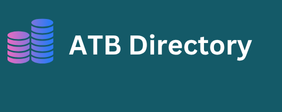Email list segmentation is a powerful strategy to tailor your marketing campaigns for industry excellence. By dividing your email subscribers into distinct segments based on specific characteristics, behaviors, or preferences, you can create targeted and personalized campaigns that resonate with each segment. This approach enhances engagement, conversion rates, and overall customer satisfaction. Here’s how you can use email list segmentation to tailor campaigns for industry excellence: Collect Relevant Data: Gather comprehensive data about your subscribers.
This can include demographics
location, gender purchase history, browsing behavior, engagement level, and industry-specific preferences. Segmentation Criteria: Define segmentation criteria that Netherlands B2B List are relevant to your industry. For example, if you’re in the fashion industry, you might segment based on clothing preferences, while a B2B software company might segment based on company size or job role. Segment Creation: Create segments that align with your criteria. You might have segments like “High-Value Customers,” “New Subscribers,” “Inactive Subscribers,” or “Product Category Preferences.” Personalized Content: Tailor your email content to each segment’s preferences and needs. Use dynamic content blocks to swap out specific elements such as product recommendations, industry insights, or case studies that are relevant to each segment.
Subject Lines and
Craft subject lines and that address the segment’s pain points, desires, or interests. This improves open rates and entices subscribers to engage with your emails. Customized ATB Directory Offers Offer promotions, discounts, or content that directly relates to the segment’s preferences. This enhances the perceived value of your emails and increases the likelihood of conversion. Timing and Frequency: Consider the optimal timing and frequency of sending emails to each segment. For example, B2B segments might prefer receiving emails during business hours, while consumer segments might be more active during evenings or weekends. Automated Workflows: Set up automated workflows triggered by specific actions or events. For instance, if a subscriber makes a purchase, you can send them a tailored “Thank You” email followed by related product recommendations.


